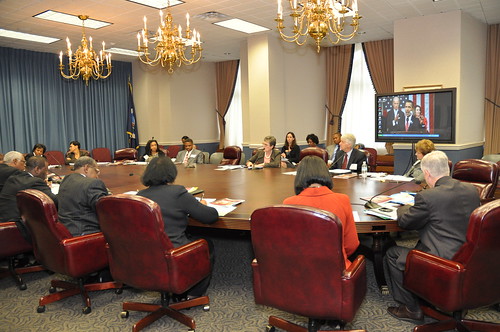This week I had the opportunity to meet with representatives from the 1890 land-grant institutions from across the country to begin a new dialogue and chart a new course together to help ensure that American agriculture remains productive, prosperous, and sustainable. These institutions, historically black universities that were established under the Second Morrill Act of 1890, are critical to USDA research and to the vitality of U.S. agriculture.
In the years to come, we will need the expertise of the 1890 institutions more than ever. For example, while the FAO warns that the combined effects of population growth, strong income growth, and urbanization will require a doubling of food production by 2050, that doubling of production will need to occur despite climate disruptions, critical water shortages in some parts of the globe, increased salinity of soil, and the necessity to reduce the energy and environmental footprints of agriculture practices. The current economic crisis adds additional downward pressure on agricultural production and research; the research portfolios at the 1890s have been especially hard hit. Extension work – and this is truly an area of excellence for the 1890 institutions – is being decimated by state budget cuts: Economic hardship in the States means economic hardship for extension. And of course we all know the incredible pressure to raise tuitions, a move that undoubtedly will price some of our finest minds out of the college market.
Against this backdrop, USDA has stepped up to the plate in providing the science safety net to ensure that the 1890 and-grant institutions remain viable, robust agricultural research, education, and extension performers. As a new Under Secretary here at the Department, I am committed to understanding what these universities need to be our true partners, and identifying the best ways to be most responsive in improving the delivery of our programs. Understanding that no two institutions are identical, and that each campus has its own strengths and areas of need, we want to build relationships with each of the 18 institutions that comprise the 1890s.
At REE, we have begun a reassessment of our programs, our assets, and our relationships with key stakeholders from the 1890 community. This review will only be effective if our colleagues from these institutions are at the table when we plan our research programs, and when we are part of the dialogues at their universities as they review their work with us. I look forward to engaging my colleagues from the 1890 institutions to make us stronger, more productive, and more closely aligned with the emerging scientific and agricultural landscapes.

